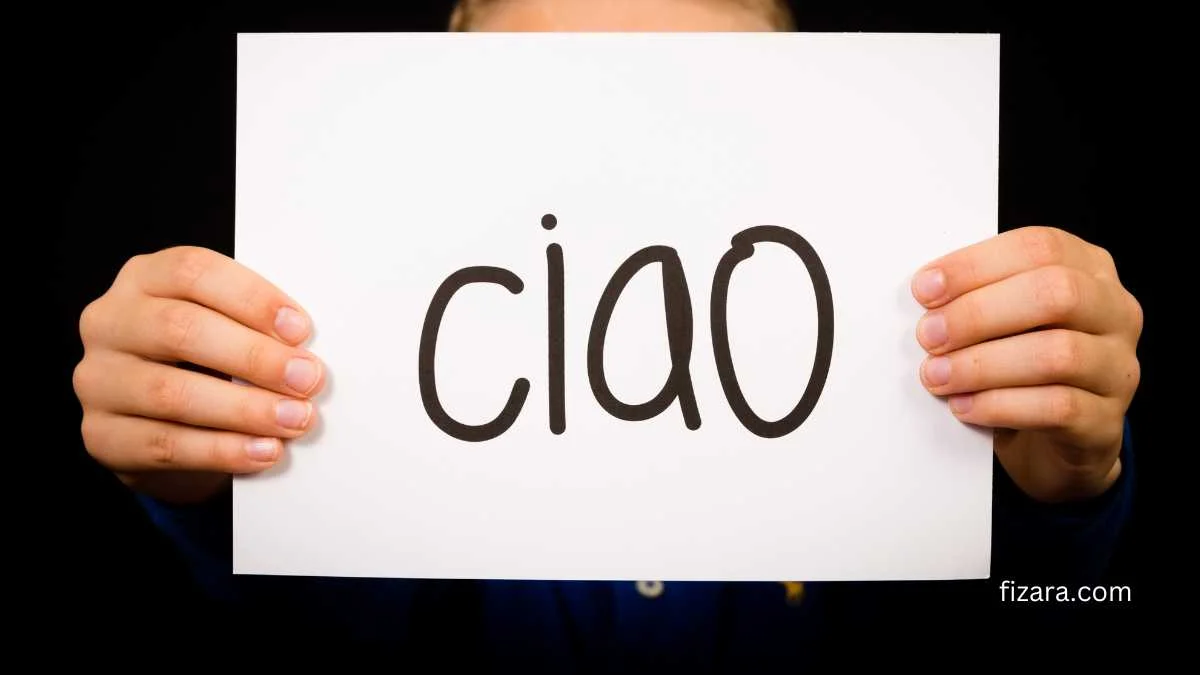Learning to say “hello in Italian” opens doors to a vibrant culture. Whether you’re planning a trip to Italy, learning a new language, or just curious, understanding Italian greetings is key. Let’s explore the rich world of Italian greetings, both formal and informal.
The Most Common Italian Greeting: “Ciao”
“Ciao” is the most common Italian greeting. It’s versatile and used in both formal and informal settings. Italians tend to use “ciao” to greet friends, family members, and even colleagues in a casual setting. The word “ciao” is simple, easy to remember, and can be used to say both “hello” and “goodbye.”
Formal Italian Greetings
In formal settings, a more respectful greeting is needed. “Buongiorno” is used to say “good morning” and is appropriate in formal situations like business meetings or when greeting people for the first time.
“Buonasera” means “good evening” and is another formal greeting used after early afternoon. If you find yourself in a formal context during the night, “buonanotte” (good night) is the polite way to say goodbye.
Greetings for Different Times of the Day
Italians use different greetings depending on the time of day. In the morning, “buongiorno” is used. As the day progresses, “buon pomeriggio” (good afternoon) becomes more appropriate. In the evening, “buonasera” is common, and at night, “buonanotte” is used to wish someone a good night.
Informal Italian Greetings
For more casual greetings, “ciao” is often the go-to phrase. Young people, friends, and family members often use “ciao” regardless of the time of day. Another informal greeting is “salve,” which is less formal than “buongiorno” but more formal than “ciao.” It’s a great middle-ground greeting.
Greeting People Based on Relationship
Italians take relationships seriously. When greeting people, the relationship dictates the greeting. In southern Italy, where traditions are stronger, formal greetings are more common. In northern Italy, you might notice a more relaxed approach with casual greetings being more frequent.
Body Language in Italian Greetings
Body language plays a significant role in Italian greetings. Direct eye contact is crucial as it shows respect and interest. Italians often greet each other with two air kisses, one on each cheek, especially among friends and family. However, in formal situations, a firm handshake is the norm.
Italian Greetings in Different Contexts
When learning to say “hello in Italian,” context matters. For example, in a business meeting, using formal greetings like “buongiorno” can make a good impression. In informal settings, a simple “ciao” suffices. Understanding the context helps in choosing the appropriate Italian greeting.
Polite Greetings and Formal Alternatives
In formal settings, addressing someone with their title and last name is polite. For instance, “Buongiorno, Signor Rossi” (Good morning, Mr. Rossi). This shows respect and acknowledges the person’s status. Italians appreciate such gestures, especially in business and formal situations.
Casual and Informal Settings
In more casual settings, Italians prefer a relaxed approach. “Ciao bella” is a casual, friendly way to greet a woman, often used among friends. For men, “ciao bello” serves the same purpose. These phrases are endearing and show familiarity.
Learn Italian: Practice Makes Perfect
Practicing how to say “hello in Italian” is essential for fluency. Native speakers appreciate the effort and often respond warmly. Use resources like language apps, online courses, and practicing with native speakers to improve your Italian greeting skills.
Cultural Nuances
Understanding Italian culture enhances your greeting experience. Italians are known for their warmth and expressiveness. Using the appropriate Italian greeting shows respect for their culture and helps you connect better with Italian people.
Greetings in Different Regions
Italy’s regions have their own dialects and ways of greeting. In some local dialects, you might encounter unique greetings not commonly used elsewhere. Learning these nuances adds depth to your understanding of Italian culture and language.
Making a Good Impression
Using the right Italian greeting makes a good impression. Whether you’re meeting someone for the first time or greeting friends, choosing the appropriate greeting shows respect and understanding. Italians appreciate the effort and respond positively.
The Importance of Greetings in Italian Culture
Greetings are a significant part of Italian culture. They reflect the warmth, respect, and expressiveness of Italian people. Understanding and using the right greetings helps you integrate into Italian society and builds better relationships.
Final Thoughts
Learning to say “hello in Italian” is more than just words. It’s about understanding the culture, the context, and the relationships. Whether you’re in a formal setting or greeting friends, the right Italian greeting can make all the difference. Keep practicing and immerse yourself in the rich and vibrant Italian language and culture. Buongiorno, buonasera, and ciao!
By understanding and using these greetings, you’ll not only learn a new language but also make a great impression on native Italian speakers. So, next time you greet someone, do it the Italian way!
Frequently Asked Questions
What are the most common Italian greetings?
“Ciao” and “Buongiorno” are the most common Italian greetings, suitable for both formal and informal situations.
How do you say “good afternoon” in Italian?
“Buon pomeriggio” is the Italian way to say “good afternoon.”
Are there different greetings for formal and informal situations?
Yes, formal situations often use “Buongiorno” or “Buonasera,” while informal settings typically use “Ciao.”
What is the origin of the word “Ciao”?
“Ciao” originates from the Venetian dialect and is derived from a Latin word meaning “I am your humble servant.”
Why is it important to learn greetings from a native Italian speaker?
Learning from a native Italian speaker ensures correct pronunciation and understanding of cultural nuances, promoting good health in language learning.









